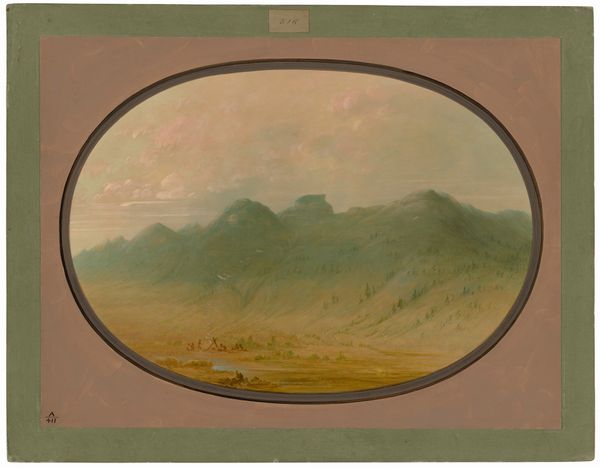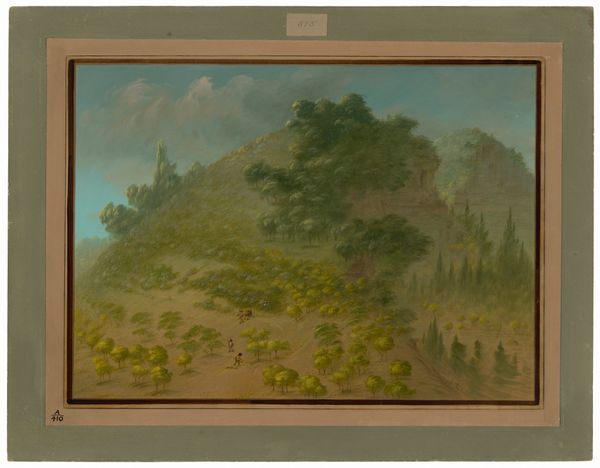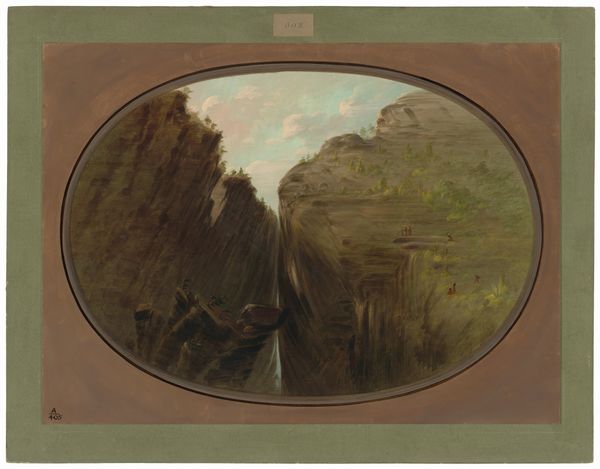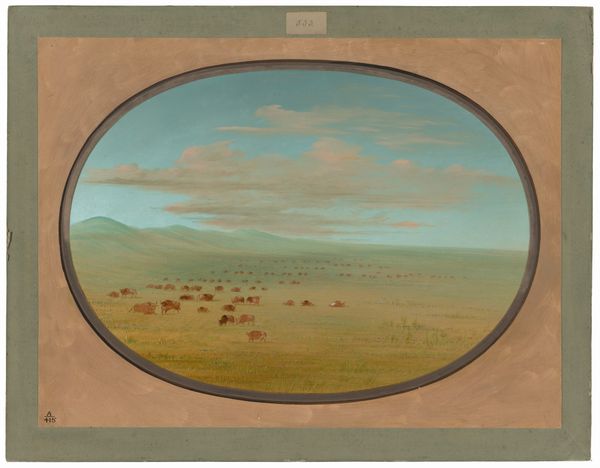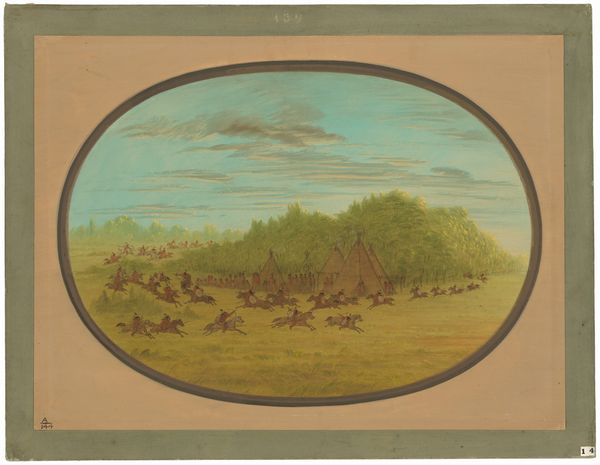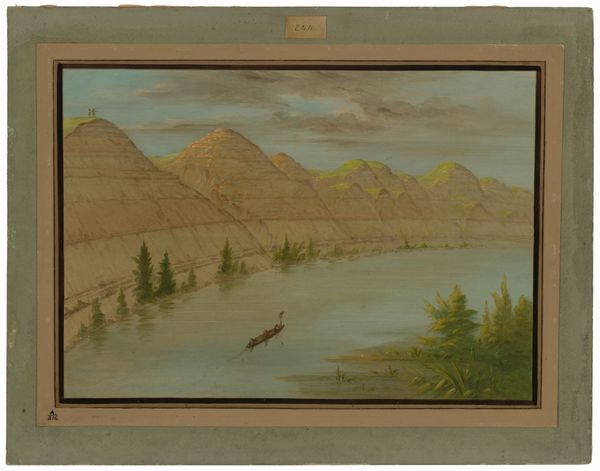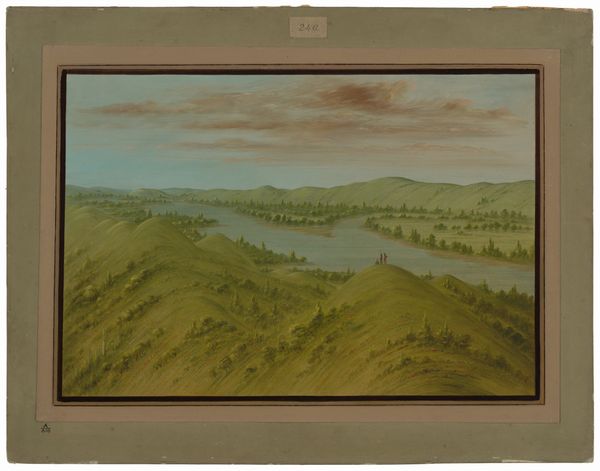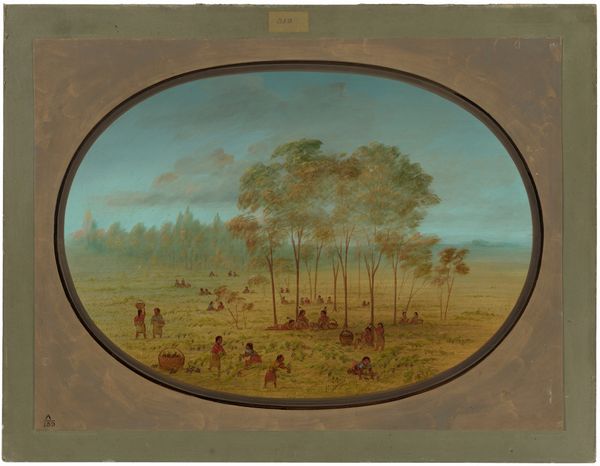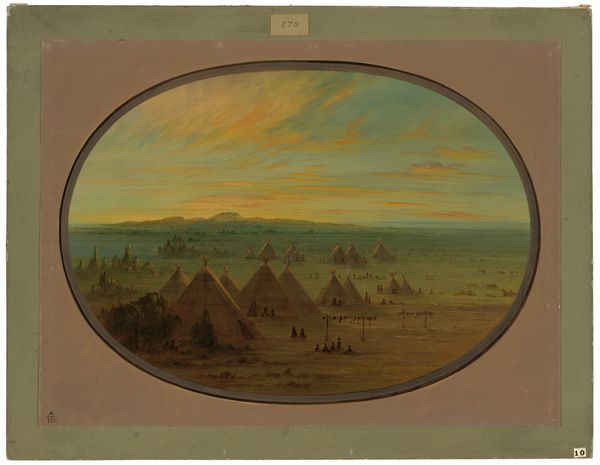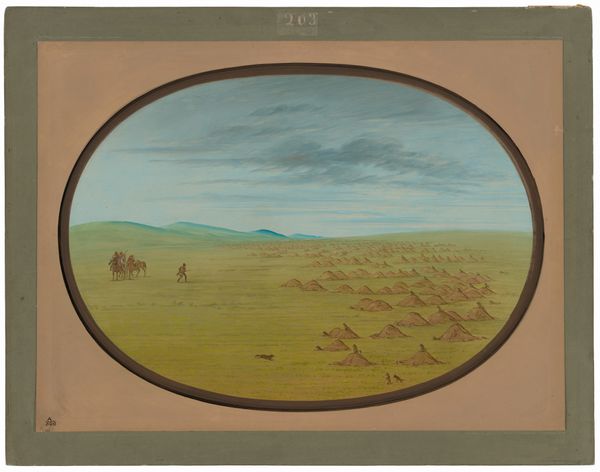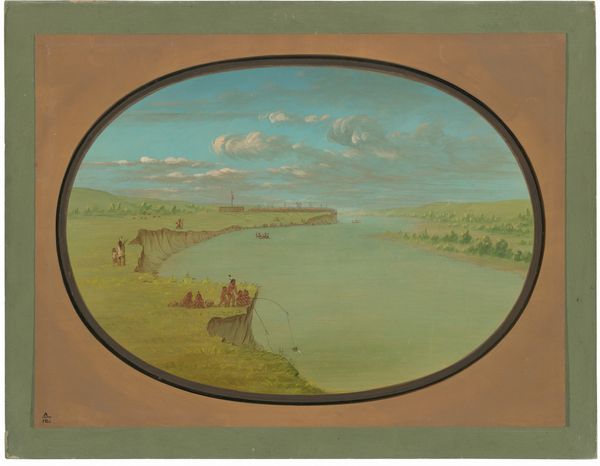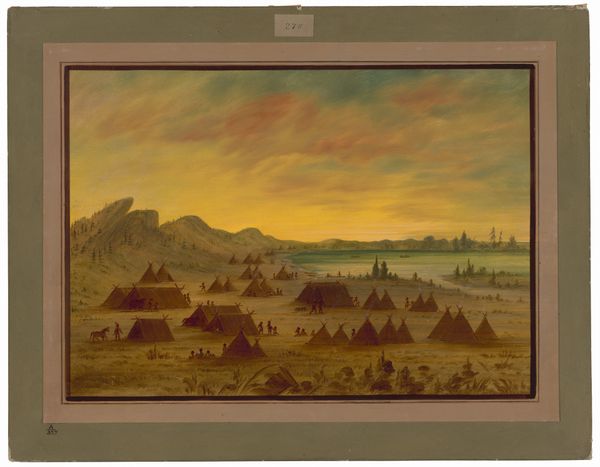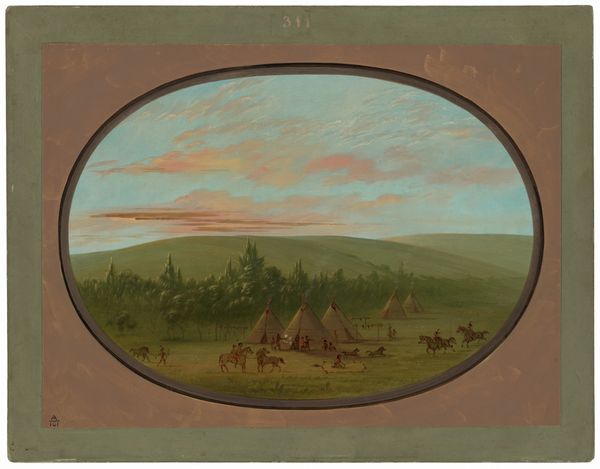
Dimensions: overall: 47 x 62.9 cm (18 1/2 x 24 3/4 in.)
Copyright: National Gallery of Art: CC0 1.0
Editor: So here we have George Catlin’s “View in the Crystal Mountains”, a watercolor and possibly plein-air painting from the mid-19th century. There’s this wonderful serene quality to the misty landscape. I wonder, what historical contexts inform your understanding of this work? Curator: Catlin's paintings, especially those depicting Native American life and landscapes, need to be understood within the socio-political context of 19th-century America, specifically westward expansion and Manifest Destiny. How do you think his representation of the “Crystal Mountains” plays into the concept of the "American West"? Editor: I suppose that this landscape looks kind of untouched; but it probably wasn’t. This adds a layer of complexity considering his legacy also has some…problematic dimensions? Curator: Precisely. The romanticized landscape often served as a tool to justify displacement by depicting the land as empty and available, even if inhabited by native tribes. The framing, this kind of 'window' into nature, reinforces the idea of ownership and observation rather than participation. Does that make sense? Editor: Definitely, especially the window frame point – almost like looking at nature through a controlled lens. I guess I hadn’t really considered that element of control. Curator: And who controls the narrative, and for what purpose? Considering Catlin also painted portraits of Native Americans, it's important to examine who was viewing this art, and what narratives they reinforced through it. His role as an artist should be re-evaluated by understanding what kind of historical implications Catlin's art could involve. Editor: I’m seeing this landscape very differently now! It's like peeling back the layers of romanticism to reveal the power dynamics beneath. Curator: Exactly! The history tied up within a seemingly simple landscape painting reveals so much about 19th-century America. Editor: This gives me a lot to think about – how seemingly peaceful images could be viewed in such a contradictory manner, or say a lens for colonization. Curator: Yes. History helps to unlock these important perspectives!
Comments
No comments
Be the first to comment and join the conversation on the ultimate creative platform.
